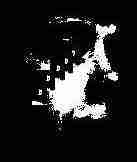The lesson I had in mind was based on two articles I found on Google Scholar. One was a “Report in Argument’s Clothing An Ecological Perpsective on writing instruction in the Seventh Grade class room” (Nystrand & Graff, 2001) in the Elementary School Journal; the other was “The Revolt against Realism: the attraction of fiction for young writers” (Newkirk, 2001) Elementary School Journal.
These two articles presented different scenarios in which instructors of writing assessed a particular issue of transfer of learning in the classroom. In the Nystrand & Graff article an experienced teacher with 30 years in the classroom encountered ‘unanticipated difficulties in helping her seventh grade students produce effective arguments in their written work; despite best practices of a skilled, dedicated teacher: hers was a challenging and not altogether successful effort. The fact that the students were still not writing arguments (and probably thought they were)” This situation is the research problem addressed in Nystrand.
There is a beautiful example of one of the best students writing of this kind of I would hesitate to say breed let’s say pedigree: created by the student writing sample p. 481. I have often seen this failure of the student to demonstrate some difference in organization and style that separates creative from report writing in scoring for No Child Left Behind with this same inability, lack of skill or defect at K-11 level and beyond. This example fits perfectly into the analogue I face with my adult corrections client who has a similar problem not understanding the difference between, and believing his writing and e-mailings which I assess at lower middle school at best scarcely resembles a format I recommend he correspond with attorneys and judges [in such mode and so on] are adequate but miss the tree for the forest consistently.
I would use the writing sample of the creative report as the group workshop media; and, each teacher would be encouraged to comment on their assessment and evaluation of the writing and in a short statement as possible suggest how that deficit might be addressed in their teaching practices. I am of the belief that there needs be substantial training in mechanics, usage and grammar; well before a student can be expected to write creatively (and style beyond that is one of the first indications of creativity) they must be well grounded in the conventions of language; and herein lies an major problem and so on. I would attempt to integrate lessons in the basics into each students personal learning recommendations for improvement portfolio. There probably needs be some threshold of performance for admission to advanced creative writing; a screening for fundamentals in conventions would achieve some of but not all those ends; but can these features of language that amount to errors in syntax and semantics in progressively more complex writing tasks be taught in 1st and 2nd grade is another question.
----------------------------------------------------------------------------
My second lesson for discussion in the creative writing teacher small group is about the criteria young writers use to select their fictional story topics; and how the media has transformed from a largely paper and book bound state to the modern state of the art and education visual imaging delivery system.
Not surprisingly one of the criteria is ‘ease’ as one of the students writes
“ Writing fiction is easier than writing a true story because you don’t have to think so much; you can just make up stuff”
The article points out that adults and parents tend to look at this approach as a cop out on middle class ideals; but the students show a surprising resilience to this attitude and state of mind of their conservative elders; and ironically reflect the ideal of the leisure society
“When I write a story I sometimes get into it so much that I actually feel it happening; I just write as fast as I can to get all my thoughts down…it’s like war. I have to get my thoughts down…you have to think fast and be careful”
In the small group then we could briefly discuss each participant’s thoughts on the student’s writing, and the thought behind it; one of these issues is the way developing creative writers use the context of the modern media and how a writing teacher can use this knowledge to enhance the creative process for the students
Final project
15 years ago

No comments:
Post a Comment